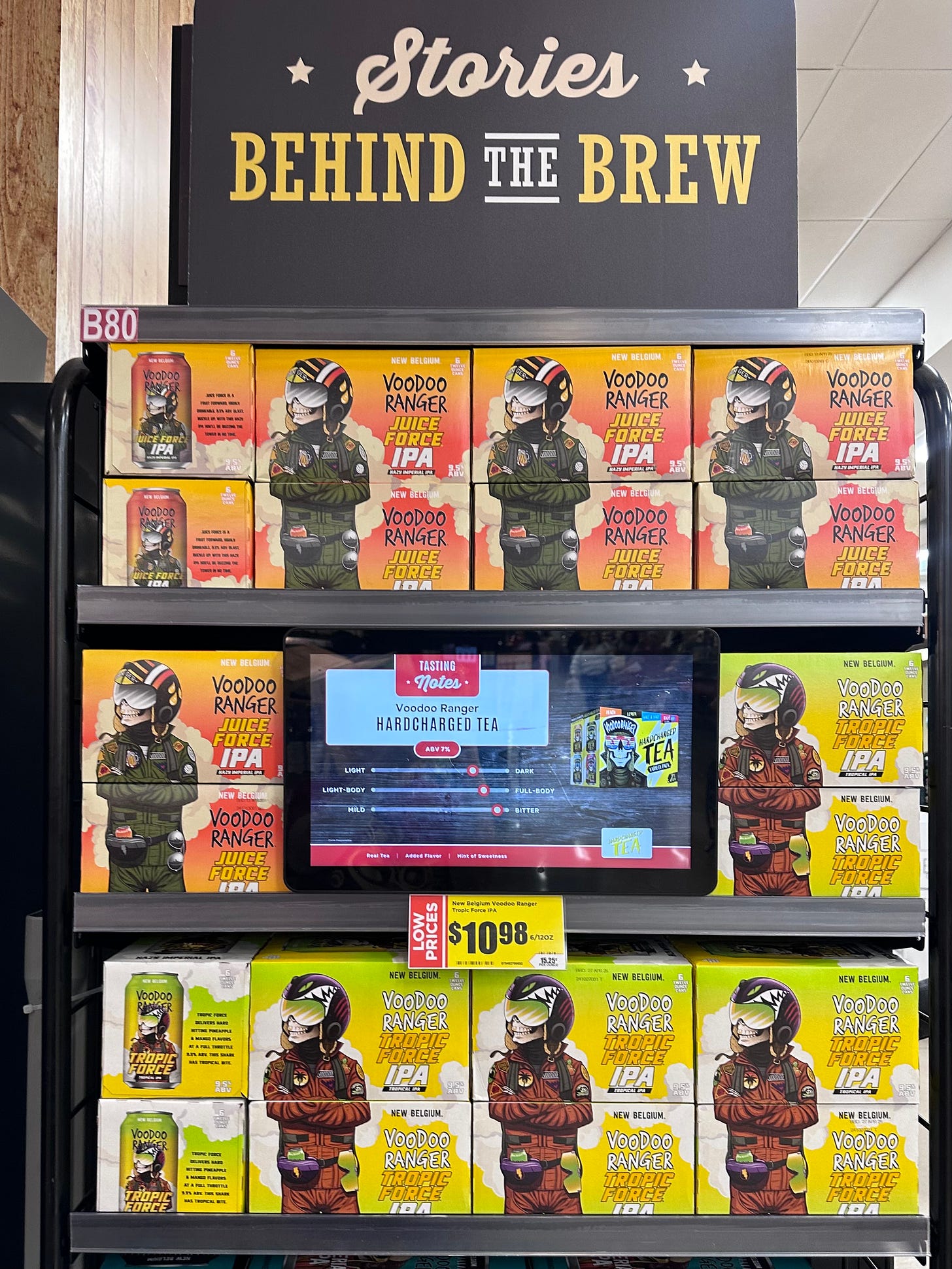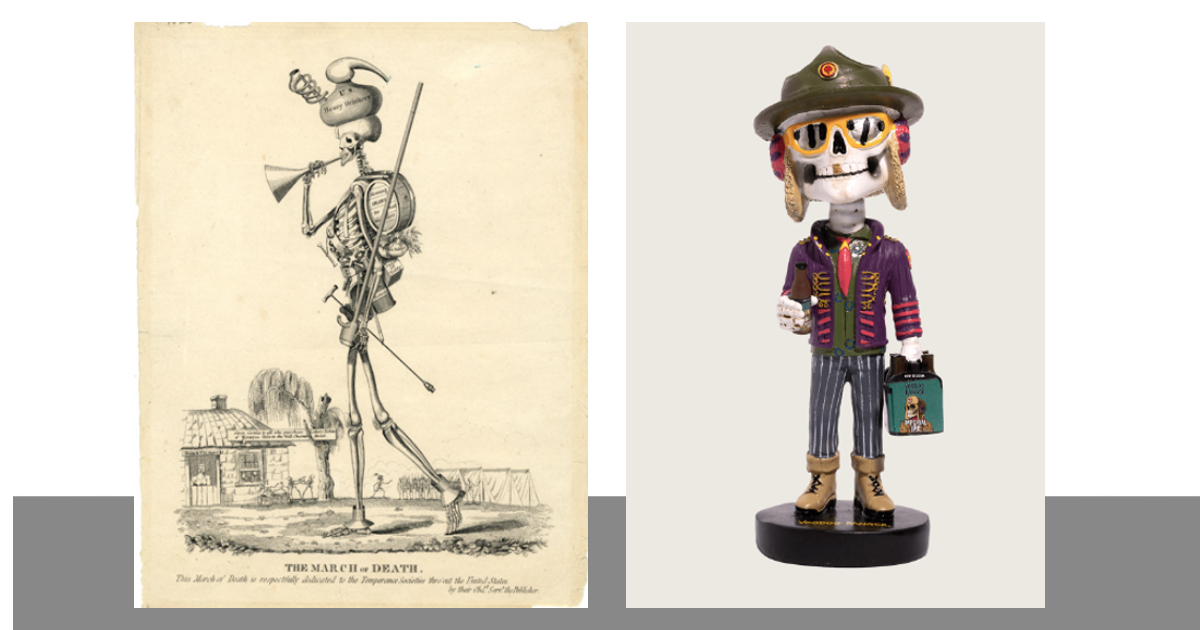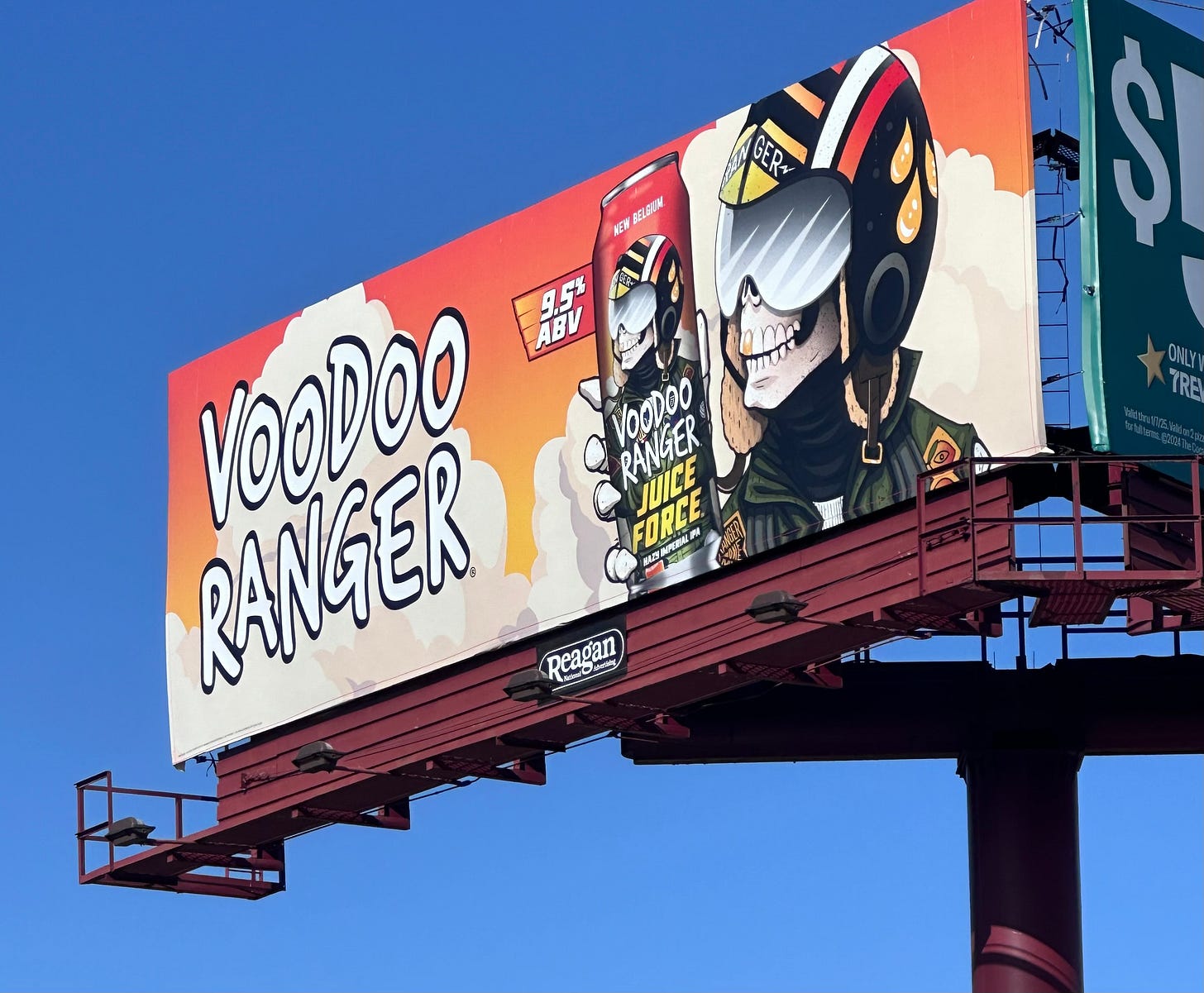The unspoken reason it's so hard to stay sober
Unpacking the deadly impact of limbic capitalism and its growing grip on all of us.
For most of my life, I didn’t give much thought to beer ads, free wine samples, or TV characters who always had a cocktail on hand. It’s easy to be oblivious when the extreme harm of alcohol hasn’t hit close to home.
God how that changed a few months ago when I found myself in an ICU sitting next to my sibling, who was fighting for his life as he tried to withdrawal from alcohol. He was on a ventilator, fully sedated. It. Was. Terrifying.
It was also baffling. How had my loved one—who not so long ago was a long-distance runner, a tech geek, and a compassionate cat rescuer—become so sick so quickly?
There is no single answer that explains his illness, because addiction is a highly complex disorder.
It’s also undeniably highly profitable, a reality often overlooked by the medical community, journalists, and advocates. 80 percent of alcohol sales go to the 20 percent of customers who are the heaviest users, a data point shared in the book “The Age of Addiction: How Bad Habits Became Big Business” by historian David T. Courtwright.
Alcohol marketing has been around a long time, but in recent years, it has accelerated and become ever more engineered, harnessing decades of neuroscience and behavioral marketing research to ensnare vulnerable people while flying under the radar of regulators.
Once the algorithms know you have a problem, for example, the online triggers are relentless (the industry calls them “cues”). TV shows. Influencers. Shopping cart “recommendations.” As these Reddit users in recovery point out, how the hell do you turn the alcohol ads off?
It’s truly all encompassing. I stumbled upon a “cue” when I drove to CVS to pick up my family member’s at-home withdrawal meds. As I waited in the drive-through, I was forced to stare at a billboard for Voodoo Ranger, one of my loved one’s drinks of choice. The brand’s mascot—a skeleton wearing military goggles and flight helmet—grinned down at me. It was also the same stupid grin that could be found on the Voodoo Ranger for sale inside CVS, because pharmacies now sell addiction while they also treat it. Fun!
A few days later, at the grocery store, I was again confronted with the stupid pilot-skeleton, in the form of a giant color-coordinated stack of Voodoo Ranger’s many different products. The display had a TV running a loop of commercials promoting Voodoo Ranger, including one that touted the “tasting notes” of the various beers and “hardcharged teas.” This was absurd as it was depressing. The Voodoo Ranger lineup is not focused on flavor. It’s all about the alcohol: Nearly all the products clock in at 9.5% ABV or higher.

The manufacturer, New Belgium Brewing, often brags about the high alcohol content in its nihilistic, sarcastic social media campaign. The gold-toothed ranger, who is obviously male and has some sort of online job, is often seen blowing off his girlfriend in pursuit of more beer. In a typical post, the Ranger skeleton proudly gets shitfaced during a Monday morning work call, what the brand calls “living rangerously.”
Yeah.
Clearly, they’re going after a certain demographic. New Belgium sniffed out a vulnerable and untapped market for highly online, cynical young male drinkers and aggressively went after them….online, in the grocery store, on the street. Everywhere, basically.
It’s working: Voodoo Ranger is the #1 selling IPA for two years in a row.

The hidden world of limbic capitalism
While they reap the profits, they’re killing their “top” customers, a hidden-but-widely-accepted danger of “limbic capitalism,” a term coined by historian Courtwright.
As he explains it:
“Limbic capitalism refers to a technologically advanced but socially regressive business system in which global industries, often with the help of complicit governments and criminal organizations, encourage excessive consumption and addiction. They do so by targeting the limbic system, the part of the brain responsible for feeling and for quick reaction…the pathway of networked neurons make possible pleasure, motivation, long-term memory, and other emotionally linked functions crucial for survival. Paradoxically, these same neural circuits make possible profits from activities that work against survival, businesses having turned evolution’s handiwork to their own ends.”
The unique thing about catering your business to directly exploit the neurotransmitters of the limbic system—selling beer as opposed to selling tax software—is that the limbic system acclimates, needing ever-larger doses to provide the same sense of pleasure.
The science of limbic capitalism has become so sophisticated that even products that can’t create physical dependency can be highly addictive, such as gaming, gambling, and social media. As Courtwright shares:
“They select from a menu of psychological ingredients…unpredictable but stimulating feedback, a sense of incremental progress and mastery, tasks or levels that get more challenging, tensions that demand resolution, and social connection to like-minded users.”
Alcohol addiction fuels all kinds of industries
But alcohol—which is highly physically and mentally addictive, cheap to render, easy to obtain, and socially normalized by corporate greed—is an especially lucrative driver of limbic capitalism, with no signs of increased regulation, despite all we know about how harmful it is to society.
Part of its persistent popularity is that so many companies benefit from alcohol addiction, from the private equity companies who invest in startups that reduce the friction around obtaining booze, to drug testing companies, to apps like DoorDash, to pharma companies developing addiction drugs, and so on. Even worse is how recovery itself has become a booming business, despite how many people end up repeating rehab or finding other ways to get better (or dying), and despite how little oversight exists.
“Rehab is no charity, especially not in the US, where repeated admissions exhaust the savings of desperate families. More broadly, the lack of medical cost control in makes the US the world’s most lucrative market for the repair of engineered excess,” Courtwright states.
Meanwhile, more people are dying
For all these reasons, is it any wonder why there are so many recent headlines like these?
Alcohol Deaths Have More Than Doubled in Two Decades, Study Finds: NYT
Alcohol Use Disorder: A Growing Public Health Crisis: Columbia University
By the numbers: America’s alcohol-related health problems are rising fast: STAT News
Until something changes, the industry will plow ahead. Right now, they’re still trying to capture more victims, notably in the Gen Z age bracket. They don’t try to hide this, as evidenced by this quote in an article on how alcohol manufacturers are wooing young people with highbrow artist collaborations:
“Younger consumers are just not engaging with alcohol as much,” said Marten Lodewijks, the president of the United States division of IWSR, a data firm that tracks the alcohol beverage industry. “So there’s a much bigger effort to come up with hooks to bring them in.”
Hooks?
Hooks. It’s awful. So awful.
What can be done? Regulate it like cigarettes, for starters
While treating addiction is quite challenging (especially when rehab is profitable, largely unregulated, and not required to actually cure anyone), preventing it is easier. There are effective harm reduction strategies that we know work, largely based on cigarette regulation. Scotland in particular is setting a great example, where the Alcohol Health Alliance has a very smart, six-point manifesto:
Tie taxes to %ABV and inflation (the higher the alcohol content, the higher the tax)
Set a baseline price that’s based on alcohol units (making the cheap stuff more expensive)
Create stricter regulations on ads and marketing, managed by an independent body not dependent on alcohol or marketing revenue (so as to not create a vicious loop of fake medical research and hollow calls to “drink responsibly”)
Add more labeling on alcoholic products to indicate the harms so it’s at least on par with food labeling
Develop stricter alcohol licensing that takes public health harms into account, not just things like zoning and crime rates.
Funnel more funding to treatment services, because the need is obvious.
Even doing one of these things in the US—even if it’s a half-assed effort—would reduce the risk of harm and death among our most vulnerable loved ones.
As a frustrated, sad, not-rich sister of someone who I may very well lose to this awful disease, I don’t have a ton of power to implement systemic change.
But I can spread the word: It doesn’t have to be like this. We’re all getting manipulated, and the more we realize this, the more power we have.
If you love someone struggling to get or stay sober, look around at their daily world: They are not just fighting addiction, they are fighting capitalism, too.





Big Alcohol and Big Tobacco get them when they're young and hang on to them as long as possible. And college campuses serve as an incubator for drinking, vaping and weed, etc. My husband's drinking buddies were all just oversized frat boys who never stopped.
Then because of the mentality that "kids are just going to drink anyway", many parents make it available to them. I just wrote a piece about parents drinking with their teens (to teach them to "drink responsibly"). The thinking is "they do it in Europe and those teens don't have a drinking problem". Totally false.
It's so sad that alcohol is just accepted as part of life.
And I am so sorry about your brother. Mine was a substance abuser from adolescence until the day he died (addicted to meth) in his 50s. It did a number on me as a parent - all sorts of fear for my son. I don't know if you have kids, but be sure you deal with the emotions so you don't over-parent your kids. I caused all sorts of problems.
This is so powerful and important. I'm sorry you had to write it, but I'm grateful that you did write it with your usual perseverance and clarity. You're so wise to connect addiction with capitalism. It makes me think about all the alcohol ads targeted to mothers - "mommy juice," etc. Definitely lots to think about here and to share with my teenage son!